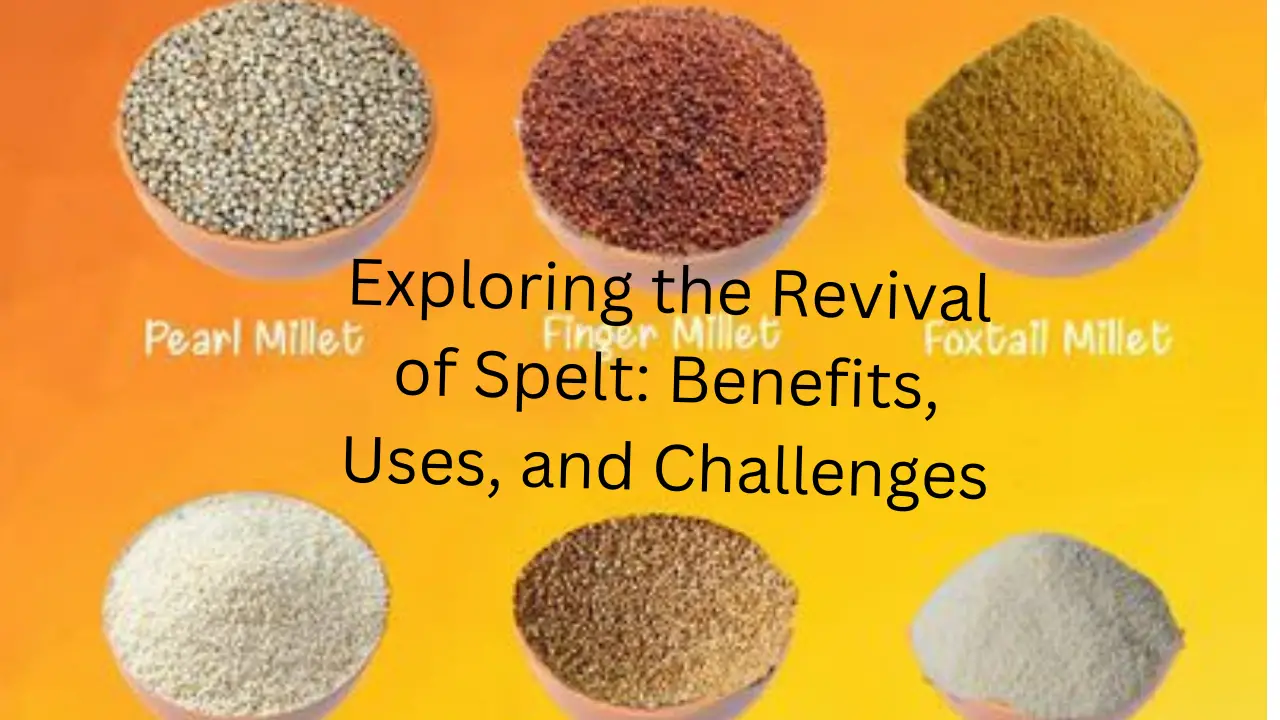
Safer Home SH502 Indoor Plug-In Fly Trap for Flies, Fruit Flies, Moths, Gnats, and Other Flying Insects – 400 Sq Ft of Protection
26% OffExploring the Revival of Spelt: Benefits, Uses, and Challenges
In the world of ancient grains, spelt stands as a testament to the resilience of traditional crops. Once a staple in diets across cultures, spelt has experienced a renaissance in recent years due to its unique attributes and potential health benefits. In this article, we’ll embark on a journey to explore the revival of spelt, uncovering its benefits, varied uses, and the challenges faced in its cultivation and integration into modern food systems.
Introduction
The revival of spelt isn’t just a rekindling of culinary nostalgia; it’s a deliberate effort to explore the potential of a grain that has roots in history while offering benefits for modern lifestyles.
Spelt: An Ancient Grain Resurfaces
Spelt, known by its scientific name Triticum spelta, is an ancient relative of modern wheat. It was widely cultivated in Europe and the Middle East thousands of years ago.
Nutritional and Health Benefits
Nutrient-Rich: Spelt is a good source of nutrients such as fiber, protein, B vitamins, and essential minerals.
Digestibility: Some individuals find spelt easier to digest than modern wheat due to differences in gluten structure.
Complex Carbohydrates: The complex carbohydrates in spelt contribute to sustained energy release.
Versatility in Culinary Applications
Baking: Spelt flour can be used for baking bread, pastries, and other baked goods.
Cooking: Whole spelt grains can be cooked and used as a base for salads, pilafs, and porridges.
Beverages: Spelt can be malted and used in the production of beverages like beer.
Challenges in Spelt Cultivation
Lower Yield: Spelt generally produces lower yields compared to modern wheat varieties.
Huskiness: Spelt’s tough outer husk makes processing more challenging.
Disease Susceptibility: Some spelt varieties are susceptible to diseases like rust and mildew.
Organic Farming and Sustainability
Spelt aligns well with organic and sustainable farming practices:
- Reduced Inputs: Spelt often requires fewer synthetic inputs.
- Crop Rotation: Crop rotation can help control pests and diseases.
Preserving Genetic Diversity
Preserving diverse spelt varieties is crucial:
- Resilience: Different spelt varieties may have varying levels of disease resistance and adaptation to specific climates.
- Culinary Diversity: Different spelt varieties offer unique flavors and textures.
Modern Processing and Packaging
Modern processing techniques make spelt more accessible:
- Milling: Spelt can be milled into whole-grain or white flour.
- Packaging: Well-designed packaging can enhance the appeal of spelt products.
Addressing Gluten Sensitivity
While spelt contains gluten, some individuals with mild gluten sensitivities find it more tolerable due to its different gluten structure.
Revival in Local and Global Markets
Spelt’s revival is seen in both local and global markets:
- Local: Small-scale farmers are cultivating spelt for local markets and community-supported agriculture (CSA).
- Global: Spelt products are finding their way onto international supermarket shelves.
Conclusion
The revival of spelt represents more than just a culinary trend; it signifies a return to our agricultural roots while embracing the demands of modern consumers. As we explore the benefits, uses, and challenges of spelt, we participate in a narrative that bridges history and innovation, nourishment and sustainability.
FAQs
- Is spelt suitable for individuals with celiac disease? No, spelt contains gluten and is not safe for individuals with celiac disease.
- Can spelt be used as a substitute for modern wheat in recipes? Yes, spelt flour can often be used as a substitute for modern wheat flour in recipes.
- Are there specific culinary traditions associated with spelt? Spelt has historical significance in various European cuisines, and some traditional dishes still incorporate spelt.
- Is spelt more environmentally sustainable than modern wheat? Spelt’s lower input requirements and compatibility with sustainable farming practices contribute to its environmental sustainability.
- Can spelt be a solution to food security challenges? While not a sole solution, cultivating diverse grains like spelt can contribute to crop diversity and resilience in food systems.











